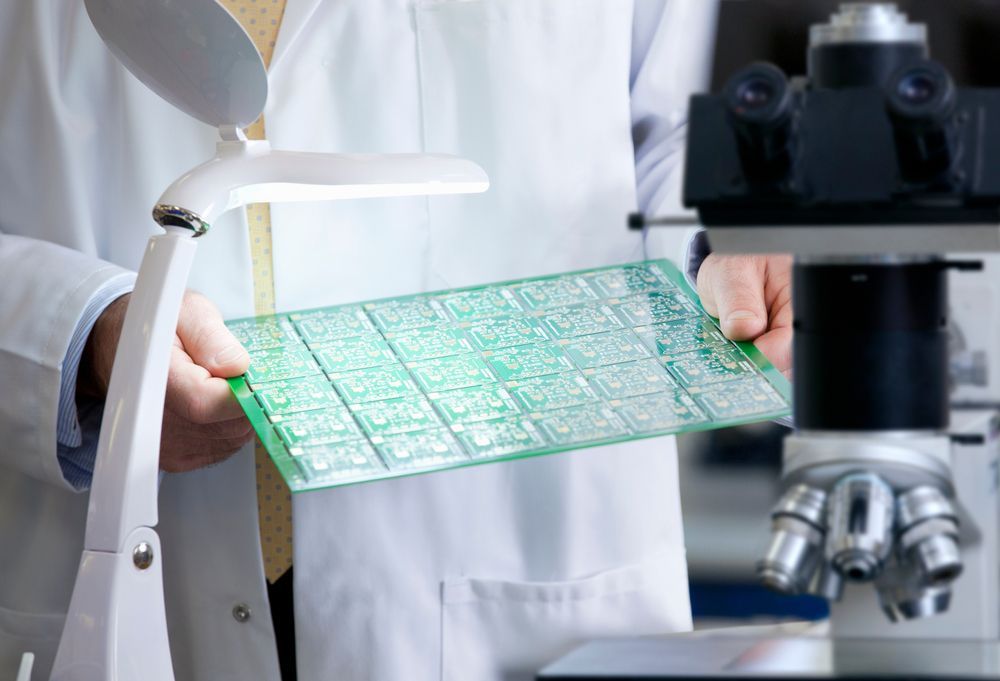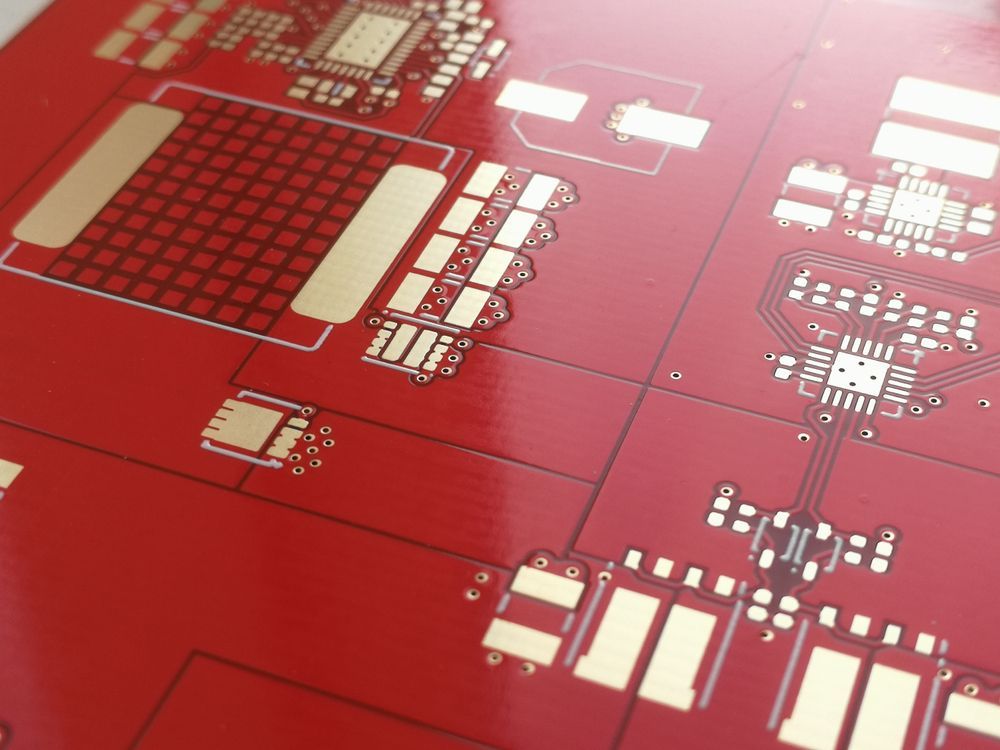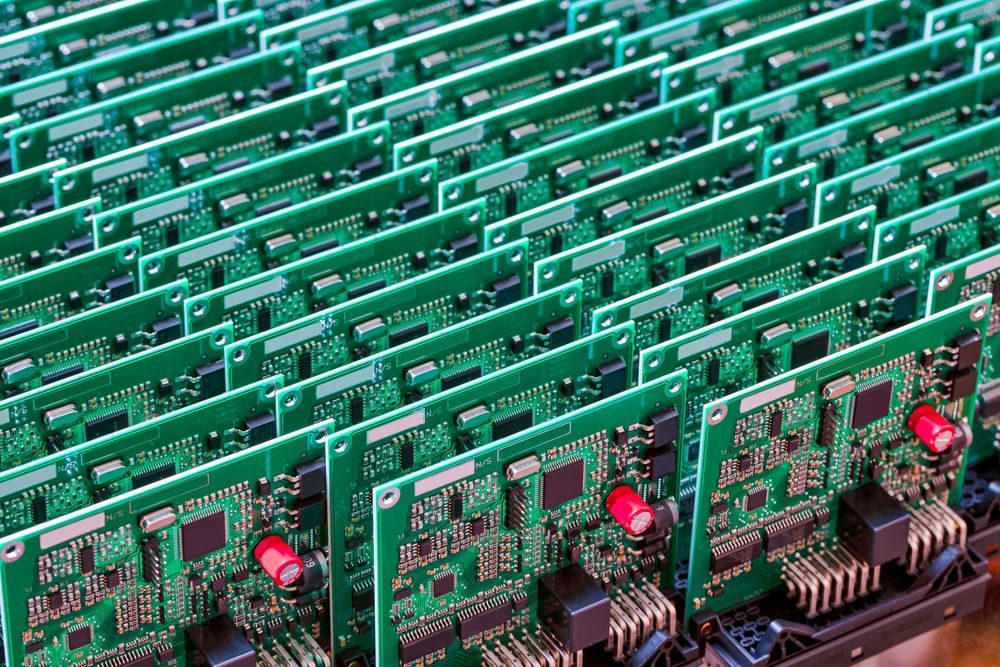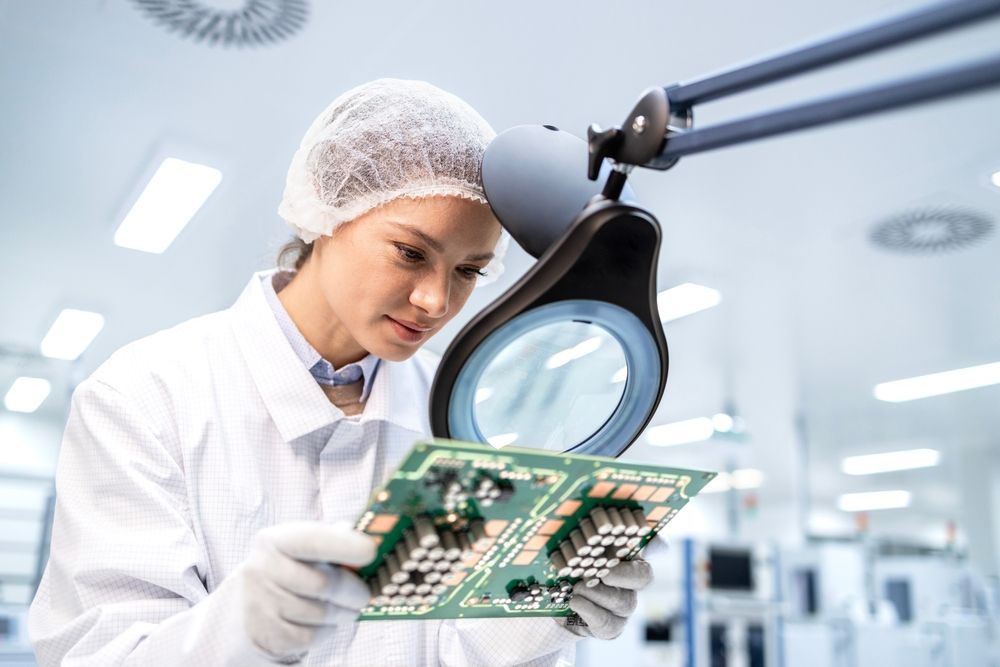PCB Potting vs Conformal Coating: Pros & Cons
Environmental protection is essential in high-reliability electronics. Printed circuit boards (PCBs) used in mission-critical applications must withstand moisture, chemical exposure, vibration, and thermal cycling, without compromising functionality. Two common protection strategies are conformal coating and potting, each with distinct trade-offs in performance, cost, and serviceability.
This guide compares both methods from a technical and functional standpoint and explains how
EI Microcircuits supports OEMs in selecting and applying the right solution.

Defining the Methods
What is Conformal Coating?
Conformal coating is a thin polymer layer (typically 25–250 microns) applied to the surface of a PCB to protect against moisture, dust, and chemical contaminants. It “conforms” to the board’s contours and components without fully encapsulating them.
Common materials include:
- Acrylics
- Polyurethanes
- Silicones
- Epoxies
- Parylene (vapor-deposited)
Application methods include selective coating, brushing, dipping, and spraying. Cure processes vary by material and may involve air drying, UV curing, or thermal activation.
What is Potting?
Potting involves encapsulating all or part of a PCB assembly in a solid or gel-like compound, usually inside a dedicated housing. The material fills voids and creates a sealed unit that offers mechanical and environmental protection.
Typical potting compounds include:
- Epoxies (rigid)
- Polyurethanes (semi-flexible)
- Silicones (flexible, temperature-resistant)
Potting compounds are poured into a mold or enclosure and cured to form a solid mass, fully embedding the components.
Functional Differences and Use Cases
Both methods aim to protect electronics, but their applications differ based on use case, mechanical requirements, and serviceability.
Conformal coating is best suited for:
- Lightweight, compact assemblies
- Applications requiring rework or inspection
- Moderate environmental exposure (humidity, light splash)
Potting is better for:
- High-shock or high-vibration environments
- Applications requiring full sealing from water or corrosive fluids
- Tamper resistance or IP-rated mechanical protection
Pros & Cons of Potting
Advantages
- Lightweight and space-efficient. Adds minimal volume or mass to the assembly, making it ideal for aerospace and compact designs.
- Field repairable. Sections can be removed and recoated, allowing for inspection and rework.
- Cost-effective. Lower material use and shorter processing times reduce total applied cost.
- Selective coverage. Allows coating only critical areas while keeping connectors or test points accessible.
- Material flexibility. Range of chemistries allows tuning for dielectric, thermal, or chemical resistance needs.
Limitations
- Limited mechanical protection. Provides minimal shock or vibration dampening.
- Not fully waterproof. Suitable for splash or humidity, but not for full submersion or high-pressure washdown.
- Coating gaps. Improper application or poor adhesion can lead to coating voids, compromising protection.
- Cure dependency. Some coatings require controlled temperature or humidity to cure properly, adding process control complexity.
Pros & Cons of Conformal Coating
Advantages
- Full environmental sealing. Provides robust protection from liquids, dust, and corrosive gases. Ideal for outdoor or marine applications.
- Mechanical stability. Excellent resistance to vibration, impact, and thermal expansion mismatches.
- Electrical insulation. Prevents arcing or breakdown in high-voltage circuits.
- Tamper resistance. Makes reverse engineering or unauthorized modification difficult.
- Thermal management. Some potting compounds offer high thermal conductivity to dissipate heat away from critical components.
Limitations
- Non-repairable. Once cured, potting cannot be removed without damaging the assembly.
- Weight and volume. Significantly increases the mass and size of the final product.
- Longer processing times. Cure times can range from minutes to several hours, depending on the compound and temperature.
- Cost of materials and labor. Higher volume and precision dispensing requirements increase per-unit cost.
- Thermal stress. Mismatched expansion rates between potting material and components can create mechanical strain.
Selecting the Right Method for Your Application
The right choice depends on environmental exposure, mechanical stress, serviceability, and total cost of ownership. Consider the following:
| Criteria | Conformal Coating | Potting |
|---|---|---|
| Moisture Protection | Moderate (humidity, splash) | High (immersion, washdown) |
| Vibration/Mechanical Shock | Low | High |
| Field Serviceability | Yes (coating removable) | No (permanent encapsulation) |
| Size/Weight Sensitivity | Minimal impact | Significant impact |
| Cost Per Unit | Lower | Higher |
| Thermal Dissipation | Limited | Moderate to high (if filled compound) |
| Production Throughput | Faster | Slower due to cure times |
Hybrid approaches are also common. For example, a conformal coating may be used for board-level protection, while critical connectors or subsystems are selectively potted.
How EI Microcircuits Supports Protection Strategy
At EI Microcircuits, we integrate conformal coating and potting services as part of a controlled, turnkey assembly process. Our teams collaborate early to align coating or encapsulation strategy with design intent, product environment, and compliance requirements.
Our capabilities include:
- Selective conformal coating using acrylic, urethane, or silicone materials
- UV and thermal curing with in-line inspection for coverage and consistency
- Epoxy and silicone potting using precision-dispense equipment
- Application in IP-rated enclosures or custom housing designs
- Documentation and material traceability for medical, aerospace, and defense programs
We treat environmental protection as a systems-level function, not a post-processing step. This enables better adhesion, fewer defects, and more reliable long-term performance.
Key Takeaways
- Conformal coating and potting each provide environmental protection, but differ in coverage, mechanical stability, and reworkability.
- Conformal coatings are lightweight, repairable, and suited to moderate environments.
- Potting offers superior sealing and vibration resistance but increases size, cost, and complexity.
- Application environment, serviceability, and compliance needs should drive protection strategy.
- EI Microcircuits supports both methods with controlled processes, traceability, and integration into full box-builds.
Contact us today to discuss how we can help protect your electronics in the field and throughout the product lifecycle.
let's talk
EI Microcircuits is comprised of three production facilities totaling over 100,000 square feet of climate-controlled manufacturing, engineering and warehousing. We are ready to be the solution to your next project. Contact Us, Request a Quote or Schedule a Tour today!
Manufacturing plant 1
1651 Pohl Road
Mankato, MN 56001
P: 507.345.5786
Manufacturing plant 2
2011 Klein Street
St. Peter, MN 56082
P: 507.934.5722
manufacturing plant 3
69 Power Drive
Mankato, MN 56001
P: 507.386.9160
*Each facility is configured to support your production needs. While maintaining continuity with each other in equipment, training and process control, each facility offers its own specialty. All facilities share the same data center to allow for seamless manufacturing between locations.



